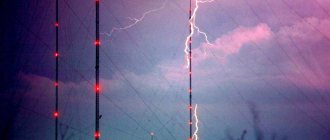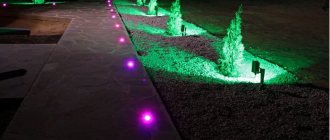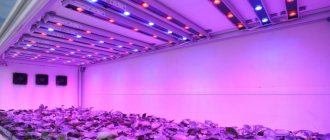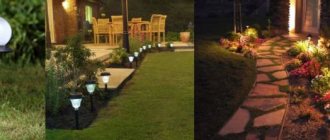Every resident of a high-rise building wants to create comfortable and safe living conditions. For this purpose, high-quality and bright lighting is certainly organized in the entrance, and usually for this purpose, lighting fixtures are installed on each floor, equipped with standard incandescent lamps, which after a long period of operation lose their effectiveness.
Dear readers!
Our articles talk about typical ways to resolve legal issues, but each case is unique. If you want to find out how to solve your particular problem, please use the online consultant form on the right or call.
It's fast and free! In order for lighting to be organized correctly, it is important to understand the rules of this work and determine how much money the residents of the house should pay.
Understanding the requirements
If a multi-storey building is owned by a certain service that maintains it, then you can’t just go and install the lighting that you like the most. There are certain standards that regulate and standardize lighting in the entrance of an apartment building. They cannot be neglected. According to GOST standards, the lighting requirements for different rooms differ. This depends on the area as well as the source used. Annex I of BSN 59/88 makes a distinction between lighting from filament lamps and fluorescent lamps. In modern practice, they are trying to increasingly use LED emitters, as well as economy lamps, which are a smaller version of fluorescent ones.
According to the standards, the illumination level for staircases should be 10 lm/m2 for fluorescent lamps. For incandescent lamps this threshold is reduced, since they consume more electricity and is 5 lm/m2. Entrances with elevators need more lighting. This is due to increased security requirements. Coming out of the elevator, where the lighting fixtures are lower, there is a certain difference and it can be difficult to see the person in the entrance. Therefore, the lighting device must partially cover the entrance area and exit from the elevator. Its installation is carried out offset to the elevator door, and not as in a regular entrance. At the same time, 7 lm/m2 is considered normal for incandescent lamps, and 20 lm/m2 for housekeepers.
Some homes still use elevators that require the door to be opened manually. Most often, the shaft in them is fenced with a net and runs inside the flights of stairs. Such a mine should also have lighting. Typically, incandescent lamps are installed and the standard is taken to be the same as for an entrance without an elevator. In accordance with hygienic standards, lighting devices should be located in basements, attics, waste collection departments and separate switchboard rooms. For the first two, lamps are installed only in passages and for lighting communications. LED or incandescent lamps are used as emitters.
Lighting the basement of an apartment building
Smart remote home lighting
When organizing lighting for the basements of apartment buildings and buildings, as well as their so-called basement floors, special strict requirements are imposed on electrical safety, as well as regarding fire safety. The power supply for such lighting should be reduced to at least 42 volts, since there is a lot of moisture in basements, and even the floor is made of conductive material. It is recommended to reduce the supply voltage by galvanic isolation, that is, using a transformer. The primary winding of which must be designed for a voltage of 220 volts, and the secondary winding for 36-42 volts, while the secondary winding must be grounded so that if this step-down device breaks down, a direct breakdown does not occur and something dangerous to humans and their health does not appear in the secondary circuits voltage.
Another requirement for basement lighting is the use of protective grounding for lamp housings. When laying and installing wiring, it is worth considering one ironclad rule: you cannot connect copper and aluminum wires, especially in wet rooms. Such contact is not durable due to the chemical reaction of these materials.
The protection class of luminaires from moisture and dust must be no lower than IP 44. This will protect not only the luminaire and lamp itself, but also ensure their reliable, trouble-free and durable operation throughout their entire service life. All lighting wiring is most often laid in an open type, or in metal pipes and special corrugated tubes, called hoses by electricians. This will protect the wiring from mechanical damage. The metal sleeve is grounded, again to protect a person from the phase breaking through to the body. As for the illumination standard, it should be at least 10 Lux for incandescent lamps; other sources are not standardized, but experts still recommend using economical LED lamps with high IP ratings for this type of lighting.
Nuances of lighting control
Changes and improvements in the technical component of lighting are happening quite quickly. Regulations cannot change so quickly, so they may not always provide specific guidance regarding the installation of equipment in entryways. Therefore they can provide general rules. For example, according to the building code instructions for any lighting system, even if it turns on and off automatically, there must be an additional way to force it to turn off the power. Such a device may be necessary during rescue or repair operations.
The automation system for lighting in the entrances of residential buildings must operate without failures and turn on devices simultaneously in all rooms that are related to the entrance. This should happen without any time delays. In some cases, an additional module in the form of a photo relay or time sensor is used for this. An integral part is emergency lighting. It should turn on simultaneously with the entire system, but if the sensors fail, it should be possible to start it in emergency mode from a manual switch.
Conclusion
At the moment, there is a wide variety of automation systems for entrance lighting. You will find videos of the operation of such systems on the pages of our website. But each of these systems is developed based on local conditions.
Otherwise, you can easily violate regulatory documents or make it very inconvenient for residents. And, of course, an important factor in the choice is the cost of such work. Although the payback for such systems often does not exceed several years.
Automation methods
Automation of lighting systems in entrances and local areas of an apartment building brings with it a large number of advantages. One of the main ones is the saving of electrical energy and the absence of additional costs for the operator. There is no one standard scheme for installation in every home. Each lighting system is unique and requires a special approach. But each uses the same modules and components, so it makes sense to consider the principles that can be easily followed later.
Separate switchboards
In the case of using such a lighting automation system, responsibility for the entire process falls not only on the units and modules, but also on the inhabitants of the entrance themselves. It is they or someone responsible who will have to monitor this process and turn on the lighting. This method is chosen by households with five or fewer floors, because in other cases it becomes problematic to monitor switching on and off.
The essence of the method is that everyone who enters the entrance must turn on the light with a separate switch. After he gets to his apartment, another switch turns off the lights. For proper load distribution, this option can be built on starters. In another case, when you press the starter, the lamps that are located on the flights of stairs turn on. And the path from the flight to the apartment is turned on separately when the user reaches the required floor. In this case, the consumption of electrical energy is reduced, so the payment will also be lower.
Lighting fixtures in basements and attics should not depend on how the lights in the entrance or on the floors are turned on. Therefore, separate switches are installed for these rooms, as described above. The area near the house must be constantly illuminated, so the overall system can be supplemented with a photo relay that will respond to the position of the sun. The disadvantage of the push-button system is that not everyone is ready to control it responsibly and the light can stay on for hours. To prevent this from happening, temporary shutdown timers are provided, for example, after 5 minutes of illumination.
Photo relay circuit
An option for an entrance lighting system using a photo relay is quite effective. It eliminates the need to constantly press keys and monitor the lights to turn off. When properly configured, the savings in electrical consumption by lighting are also at a good level. There are two options for installing a sensor for such a lighting system. The photo relay can be mounted directly in the entrance. However, you should not choose a place near the window. The fact is that after dusk it will be darker in the entrance than on the street and the sensor may not work, although the lighting in the entrance should already be turned on.
Free consultation with a real estate lawyer - contracts, transaction registration, eviction/move-in
Every resident of a high-rise building wants to create comfortable and safe living conditions. For this purpose, high-quality and bright lighting is certainly organized in the entrance, and usually for this purpose, lighting fixtures are installed on each floor, equipped with standard incandescent lamps, which after a long period of operation lose their effectiveness.
Dear readers! Our articles talk about typical ways to resolve legal issues, but each case is unique.
If you want to find out how to solve your particular problem, please use the online consultant form on the right or call. It's fast and free!
In order for lighting to be organized correctly, it is important to understand the rules of this work and determine how much money the residents of the house should pay.
What is indicated in SanPiN
Important! In the process of creating high-quality lighting, the standards contained in SanPiN, which have been in force since 2010, are certainly taken into account.
This document states that any entrance, regardless of which house it is located in, as well as how many floors there are, must be equipped with special artificial lighting sources.
How should the lighting of the local area be organized? Read the link.
Lighting standards for different parts of the entrance
To make living in the house really comfortable and safe, the basic lighting standards used for entrances are taken into account.
Lighting in the entrance, who should pay? Answers in this video:
These include:
- for landings, elevators, corridors, attics and basements, lighting of at least 20 lux must be used;
- a lamp is fixed in front of the entrance to the entrance, well illuminating the area in front of the door, and within 6 lux;
- the footpath leading to the house should be clearly visible at night;
- if the building has more than 6 floors, then evacuation lighting is additionally organized so that, if necessary, people can be evacuated from the building without problems and quickly.
Selecting light sources
Most often, standard incandescent lamps are chosen for entrances, the power of which does not exceed 60 W.
They are fixed without shades, which is considered a significant violation, since there is a possibility that if these lamps come into contact with flammable materials, a fire will start.
Also, the possibility of a fire is due to the fact that hot particles of the lamp, as a result of its destruction, can fall on various materials that are highly flammable.
Other mistakes are also often made:
- incandescent lamps certainly get very hot during operation, and even after one hour of operation they can heat up to 360 degrees, so they can only be used in conjunction with high-quality and correctly installed lampshades;
- in many entrances, lamps are used without special lenses, which is considered a gross violation, and therefore the lighting on the site will be of poor quality;
- when installing light sources, the condition is not observed, which is that the distance from them to combustible materials must be such as to completely eliminate the possibility of fire, therefore people should not use corridors and areas for installing any wooden or other structures;
- Electricians working in management companies are often unprofessional, so when working with electricity, they connect copper wires to aluminum wires, which leads to the formation of galvanic steam, which leads to the destruction of contacts.
Light sources and violations during their installation
Unfortunately, management companies responsible for public utilities in multi-storey buildings do not always comply with the above standards. Therefore, residents often have to take control of this, and often file complaints with regulatory authorities.
Incandescent lamps
This cannot be called a direct violation, but still non-compliance with the recommendations is obvious. We are talking about the ongoing installation of incandescent lamps for lighting entrances.
Yes, even in many entrances of modern houses, “Old Testament” incandescent lamps of low power of 40–60 W are still used to this day. Moreover, they are often screwed into sockets that are not protected by lampshades, which is a gross violation of fire safety standards. This type of lamp reaches high temperatures. So, within an hour of their operation, the surface heats up to 350÷400 degrees. Therefore, when the surface comes into contact with flammable materials, fire cannot be ruled out.
In addition, poorly manufactured incandescent lamps, of which there are more and more of them on the Russian market recently, quite often self-destruct. This can happen for various reasons - overheating, sudden voltage drop, manufacturing defects. If destroyed, hot particles of the lamp, scattering to the sides, can also fall on the soft door trim or other objects made of flammable materials. This may result in a fire.
When installing lighting in the entrance, other gross mistakes are made, which many residents of apartment buildings unknowingly consider to be the norm. These moments include:
- Incandescent lamps without a shade are not only a fire hazard, but also do not provide high-quality lighting, since the light from them is not dispersed properly.
- Failure to maintain the distance between lamps and products made of flammable materials. The cartridges can be hung however you like, or however convenient it is for the electrician. Meanwhile, the distance should be such that if the light source is destroyed, the contact of its hot fragments with flammable objects is completely excluded.
- Incorrect connection of wires is also a violation of the norms. Not everyone pays attention to the blatantly sagging “snot” of the wires or the lack of protective casings for the wiring. It’s good if it also has insulated twists. In addition, it happens that unscrupulous electricians, without thinking about the consequences, connect aluminum and copper wires in one twist, which is strictly prohibited.
Many similar disadvantages can occur with the use of more modern lamps. But basically they are typical for the old housing stock, which cannot be reached by professional repairmen working in accordance with existing requirements.
Considering all the disadvantages of incandescent lamps (and their only advantage is their affordable cost), increasingly, residents of entrances are switching to alternative lighting sources - fluorescent and LED lamps.
However, these types of lamps also have their pros and cons.
Fluorescent lamps
Fluorescent light sources have recently been actively advertised as the only alternative to incandescent lamps. But their leadership, it must be said, was short-lived.
Indeed, such light sources have a large number of positive characteristics. But they also have serious drawbacks.
The advantages of fluorescent lamps include the following:
- High luminous efficiency, significantly exceeding the luminous flux from incandescent lamps with equal energy consumption.
- The service life of high-quality products is up to 20 thousand hours. In contrast, an ordinary light bulb is designed for only 1000 hours of operation, and even then it clearly falls short.
- Fluorescent lamps produce light close to natural, thereby preserving the vision of people in the room.
- The surface of the lamps does not heat above 50÷60 degrees, which makes the products fireproof and allows their use in any room.
- Economical energy consumption significantly reduces operating costs.
- The compactness of modern products and the absence of the need to buy additional parts - chokes and starters, which were necessary for older lamp models.
This type of lighting source has slightly fewer disadvantages
- Possible light pulsation, both when turned on and during operation. This phenomenon may not be too pronounced, but it still negatively affects the well-being and vision of a person who is indoors for a long time.
- Contents of mercury vapor inside the lamp bulb. This factor makes it difficult to dispose of used products. In addition, the tubes are quite fragile and are damaged by almost any careless handling. And this means mercury vapor entering the room, which is extremely dangerous.
- Delay and blinking when the lighting element is turned on.
- Against the backdrop of rapidly falling prices for LED lamps, the price of compact fluorescent lamps no longer seems adequate. Moreover, taking into account the rather significant loss in energy efficiency.
LED bulbs
LED lamps of various forms have become widely used quite recently, since the first of them were a very expensive “pleasure”. Today, with the mass production of such products, their price is rapidly decreasing. Therefore, many smart homeowners are actively and without alternative switching to this type of light sources.
LED lamps are a cost-effective solution for lighting entrances. Moreover, shock-resistant models are produced that are excellent for public spaces.
The advantages of LED lamps include the following qualities:
- Minimum power consumption.
- In terms of specific light output, that is, in terms of light flux per watt of energy consumed, they are generally the undisputed leaders.
- Do not create infrared and hard ultraviolet radiation.
- Do not heat up to high temperatures.
- Long service life. The operating potential of LED lamps is 50÷100 thousand hours. That is, when they are turned on daily for 10–12 hours, the service life can reach up to 5–10 years.
- Unlike fluorescent lamps, LED fixtures turn on almost instantly, and full light output is achieved in a matter of seconds.
- The lamps do not contain toxic substances, so they can be called environmentally friendly products.
The only disadvantage of this type of lamp is their still high cost. But, firstly, as already mentioned, the trend towards falling prices is stable. And secondly, their service life justifies the costs. In addition, for three or four apartments located on the site, the cost of a lamp should not seem like an unattainable luxury.
Now, of course, this is not the end of the eighties - the beginning of the nineties, when, in conditions of a catastrophic shortage, light bulbs disappeared from entrances almost instantly. But since we are talking about an LED lamp, which is quite expensive, it is advisable to install it in a lampshade protected by reinforcement. So that intruders (and there are still some) who come to the entrance are not tempted to leave the site in the dark in a matter of seconds. A lampshade, say, with a screw fastening to the body, does not provide a complete guarantee of inviolability. But you have to tinker with it in order to open it, and doorstep thieves usually prefer not to mess with such people - they are looking for easier prey.
Who pays for the entrance lighting?
Electricity, which is spent when lighting the entrance, relates to general house needs, so the costs for it are included in the ADN. To do this, meter readings or standards are taken into account.
Usually, communal meters are installed. The readings of each apartment in the house are subtracted from the meter readings. The resulting value is divided by the number of apartments in the building, for which the square footage of each housing is taken into account.
Important! The larger the apartment, the more money the owners have to pay for one.
If the house does not have a meter, then payment is made according to the standard, and its installation is carried out by the regional administration.
To determine the fee, this standard must be multiplied by the area of the apartment, and the resulting value is divided by the total area of all apartments in the building.
Rules for replacing lighting fixtures
If there is no light in the entrance, there may be many reasons for this, for example, the lamp goes out, the lampshade is destroyed due to various influences, a short circuit occurs in the wiring or other reasons.
To solve this problem, you can use two options:
- Replacing a lamp or lighting fixture yourself. This is dangerous because apartment owners lack the necessary education and skills. To do this, you need to turn off the electricity supply, determine the cause of the lack of light and correct the breakdown.
- Contact the HOA or management company. Most often, residents of high-rise buildings resort to this method. Its disadvantages include the fact that companies send a specialist for a long time, so you have to walk for a long time in the entrance in the evening or at night without light.
Where to complain if there is no lighting
If residents discover that there is no light, they must write a statement or submit an application by phone to the Criminal Code.
How to change the management company if it does not fulfill its obligations to residents? See here.
The specialists of this company must fix the problem the next day, and a delay in this period may become the reason for writing a complaint to the housing inspectorate or the prosecutor's office.
Important! The maximum period during which the fault must be eliminated by the management company’s employees can be extended to 7 days.
Consequences for management companies in the absence of lighting
If the management company does not promptly replace light bulbs or eliminate other faults, which will lead to the absence of light in the entrance, then this threatens it with serious liability under Art. 7.22 Code of Administrative Offenses:
- a fine of 4 to 5 thousand rubles is imposed on officials;
- for legal entities the fine increases from 40 to 50 thousand rubles.
Lighting standards for various parts of the entrance and utility rooms
Lighting in the entrances of different premises has its own standards and rules (GOSTs, construction SNiPs). The main ones include the following:
- standardization is carried out according to table VSN 59-88, which contains two types of standards: light from incandescent or fluorescent lamps;
- in elevators, lamps have an illumination power of 20 lux (for fluorescent lamps) and 7 lux (for incandescent lamps);
- wheelchair spaces are illuminated with incandescent light bulbs;
- elevator shafts - 5 lux incandescent light bulbs;
- Basements and attics, as well as electrical rooms, garbage collection rooms and others, are illuminated with 10 lux incandescent light bulbs.
Console LED lamp DKU 80-80
Characteristics:
- Operating voltage - 100 - 264 V
- Network frequency - 47 - 63 Hz
- Rated power consumption - 84 W
- Nominal luminous flux - 9100 lm
- Power factor (cos φ) ≥ 0.95
- Electric shock protection class - I
- Environmental protection degree - IP67
- Overall dimensions, LxWxH - 573x243x73 mm
Peculiarities:
- To replace outdated street lamps with DRL-250 lamps
- The body is made of aluminum alloy
- LEDs CREE, Nichia, Samsung
- Aluminum LED board
- Typical power factor (cos φ) - 0.98
- Electromagnetic interference filter (EMI filter)
- Anti-condensation system
- Cosine diagram of the angular distribution of luminous intensity
Standards for controlling entrance lighting
Automation undergoes regular modernization. Regulatory documentation does not always have time to change in connection with emerging technologies. Therefore, lighting standards in the entrances of residential buildings are often advisory in nature. In this case, you need to remember the following points:
- the automatic system must be turned on and off manually;
- when installing a system that reacts automatically, the light should turn on with different degrees of illumination;
- if sensors are used, then emergency lighting is provided, switched on in the staircases automatically and manually;
- The devices that illuminate the attic are located outside this room.
Who pays for lighting in hallways, and how is the amount determined?
Lighting in hallways is a general household need. If previously the consumption of electricity for general household needs was indicated separately in the receipt, then from the beginning of 2022 this item was removed. Currently, the calculation is performed depending on the presence or absence of a common building meter.
If a common house meter is installed, then the indicators are determined by employees of the supervisory authority together with representatives of the house. After this, the difference between the received amount and the metering values in each apartment is calculated.
The number of square meters not equipped with sensors also matters. The result is distributed among homeowners depending on the area of the room. The more square meters in the apartment, the more you will have to pay for electrical energy according to the ODN.
If there is no meter, then payment is made in accordance with current regulations established in the region.
Installation of the lamp
Before installing a lamp above the entrance to the entrance, you need to choose the optimal location for it. There are three options:
- Install the lamp immediately under the visor . In this case, the light will fall directly on the door and a small area near the entrance. In order not to blind a person with bright light, the illumination level of such a lamp should be low. Then another inconvenience arises - the rest of the yard will be in the dark.
- Install the lighting fixture above the canopy. In this case, the lamp is mounted at a height of several meters, at an angle. It brightly illuminates the entire yard, but the door remains in the shadow because it is covered by a canopy.
- The best option is to install two light sources, above and below the canopy. However, this option cannot be called economical, so the decision on choosing a lighting scheme remains with the management company and residents.
The installation diagram for each lamp is different and depends on its type, installation method - ceiling or wall. Detailed instructions are included in the kit and should be followed. However, there are several basic steps that are the same for all types of lamps:
- Selecting an installation location where the lighting fixture will illuminate the largest area and create fewer shadows.
- Power off.
- Fixing the lamp on the ceiling or wall, depending on the type of fastener.
- Connecting the lamp wires to the electrical wiring and insulating them.
Wireless lamps are much easier to install. Some models come with double-sided tape, which can be used to glue the device to a vertical surface.
When choosing a lamp, it is imperative to pay attention to its technical characteristics, namely: service life, degree of protection, installation method, brightness of the luminous flux. A high-quality lighting fixture will comply with sanitary standards and will serve uninterruptedly for many years.
Who replaces lighting in hallways?
If there is no light in the entrance, then the reason can be determined independently. It could be as follows:
- light bulb burnout;
- lamp malfunction;
- short circuit;
- damage to switches;
- breakdown of the distribution board;
- accident;
- planned work.
After determining the cause of the breakdown, the management company or homeowners association is reported. These organizations are responsible for providing light in the entrances of an apartment building (the responsibility does not apply to balconies, the decision on lighting of which is made by homeowners).
What are the possible consequences for the management company if there is no lighting in the entrances?
Lighting in the entrance is very important, because in addition to its direct purpose, it provides the safety of residents and protection against theft. Therefore, authorized organizations are required to promptly respond to these applications.
If after 7 days after filing the application the problem is not resolved, the management company may be held legally liable under the Code of Administrative Offenses. In accordance with Article 7.22 of the Code, officials are subject to a fine of 4 to 5 thousand rubles. And the fine for legal entities ranges from 40 to 50 thousand rubles.
The rights and legitimate interests of citizens are controlled by the state housing inspection. Specialists of this organization and administration have the right to draw up protocols if relevant violations are identified.
LED lamp CA-7106E
Characteristics:
- Operating voltage - 160 - 250 V
- Network frequency - 50 Hz
- Rated power consumption - 6 W
- Power consumption in standby mode - ≤2 W
- Nominal luminous flux - 700 lm
- Power factor - 0.85
- Electric shock protection class - II
- Environmental protection degree - IP64
Peculiarities:
- To replace lamps of the NBB, NBO and SBO types in housing and communal services
- The body of the LED lamp is made of impact-resistant polycarbonate
- Original shockproof design
- Special fastening screws that make unauthorized dismantling difficult
- Network surge protection
- Soft start system
- LEDs Nichia, Samsung
- No flicker or stroboscopic effect
- Typical power factor (cos φ) - 0.85
- Electromagnetic interference filter (EMI filter)
- Ability to work with an external presence sensor (Eco mode)
- Three operating modes: full power, standby mode, full shutdown mode
Download description
[/td]
Automation schemes for entrance lighting
Lighting in the entrances of apartment buildings is carried out in different ways. Each scheme has its own characteristics. They can combine each other or have similar characteristics. Below are the options that are most common.
Lighting control using push-button stations
The method is more suitable for low-rise buildings, whose residents have a conscientious attitude. With its help it is possible to save money, but this depends only on the residents. The main advantage of this method is its affordable price.
Management is carried out in two ways.
The first one is a push-button post located in the entrance hall and on each floor.
The second one makes it possible to turn the light on and off only at the stairwell. Basements and attics have external lighting in the form of a standard switch or a special sensor.
If apartment owners do not show awareness in general house issues, then the lights can be turned off using a timer.
Using Light Sensors
If there is good natural light, using a system with light sensors is a suitable option. This is not the most economical option, but is used as an alternative to a standard switch.
The sensor is installed in a dark place. The device works when it gets dark. In this case, the lighting can be turned on in the entrance or outside the room. In utility rooms, it is advisable to use standard switches.
Using motion sensors
This scheme arose not so long ago, but its popularity is growing every year. When using motion sensors, savings are achieved. Moreover, no attention is required from the residents.
In this case, sensors are installed on each floor, but sometimes - one at the entrance to the entrance. After the device is triggered, the time until shutdown is counted. If there is an elevator, the lights are turned on differently. Most often, the sensor is triggered when leaving the elevator. It is better to equip the utility rooms of the entrance with standard switches.
LED lamp CA-7115E
Characteristics:
- Operating voltage - 160 - 250 V
- Network frequency - 50 Hz
- Rated power consumption - 17 W
- Power consumption in standby mode - ≤3 W
- Nominal luminous flux - 1620 lm
- Power factor - 0.85
- Electric shock protection class - I
- Degree of protection against environmental influences - IP65
Peculiarities:
- To replace lamps of the NBB, NBO and SBO types in housing and communal services
- The LED lamp body is made of aluminum alloy and impact-resistant polycarbonate
- Original shockproof design
- Special fastening screws that make unauthorized dismantling difficult
- Network surge protection
- Soft start system
- LEDs CREE, Nichia, Samsung
- No flicker or stroboscopic effect
- Typical power factor (cos φ) - 0.85
- Electromagnetic interference filter (EMI filter)
- Ability to work with an external presence sensor (Eco mode)
- Three operating modes: full power, standby mode, full shutdown mode










